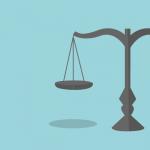This interview is with JM Littman, CEO at Webheads.
Jm Littman, CEO, Webheads
Can you introduce yourself and tell us about your role in the web design and development industry?
I’m JM Littman, founder of Webheads. I’ve been in the web game since the very beginning. Literally. I started coding in Notepad in the ’90s when the internet was still dial-up and everyone thought Yahoo was the future. My journey wasn’t exactly a straight line. My first job was flipping burgers at McDonald’s, then I ended up in the music industry working in PR with legends like Elton John, Guns N’ Roses, and Metallica. It was chaotic, creative, and, oddly enough, it taught me a lot about branding and communication. Which turned out to be perfect training for the digital world.
The real turning point came when I landed a behind-the-scenes role on the Tomb Raider movie. That one opportunity gave me the break I needed to launch Webheads. I’ve never looked back.
We’ve been going strong for over 30 years now. Making us one of the oldest web agencies still standing. We’ve worked across just about every sector you can think of, from high-end finance to motorsport, e-commerce to entertainment. We’ve grown with the web, weathered every digital storm, and helped hundreds of clients thrive online. What we do best is bring clarity, creativity, and performance together. So websites don’t just look good, they work hard.

What inspired you to pursue a career in web design and development, and how has your journey evolved over the years?
It actually all started with a website I built for my huskies. I used to race sled dogs! That site was just a personal page, something fun to mess around with. But from that, a rock photographer got in touch and asked if I could build a site so he could sell his prints of bands like Aerosmith and Led Zeppelin. This was 1994. It might have even been one of the first e-commerce sites out there.
That snowballed into more work. And then, out of nowhere, came the Tomb Raider job. It was a proper sliding-doors moment. I found myself working in the production team and even popping up on screen. That gig gave me the confidence, and the means, to start Webheads. I didn’t have a business plan. I just knew I wanted to create things online that looked good and worked even better.
Since then, it’s been a proper journey. The web’s changed beyond recognition, but I still get that same buzz building something from scratch. From husky dogs to Hollywood to e-commerce. Not your typical route into digital, but it’s worked for me.
You’ve mentioned the importance of balancing design and content. Can you share a specific project where you had to make tough decisions between visual appeal and content clarity?
One that springs to mind is a project we did for a financial firm that wanted a super slick, minimalist design. Very dark mode, very design-forward. But the trouble was, they also had a lot of complex content that needed to be communicated clearly. Investment terminology, legal disclaimers, detailed service breakdowns. You can’t exactly bury that in tiny grey text on a black background and expect users to trust you.
There was a real push and pull between the aesthetic they wanted and what actually worked for their audience. In the end, we had to rethink the entire layout. We kept the overall look stylish and modern, but made some firm calls. Lighter sections for text-heavy areas, better hierarchy, cleaner typography. We prioritized legibility without sacrificing the brand’s visual tone. It wasn’t easy convincing them to pull back on the ultra-minimalism, but once they saw how much clearer everything felt, they got it.
That’s the thing. Great design is communication. If it looks stunning but no one knows what you do or where to click, what’s the point? We’re always walking that line between form and function. And sometimes, the bravest design decision is to simplify.
How do you approach integrating current design trends, like minimalism, with a client’s unique brand identity? Can you walk us through a recent example?
NatrixStudy was a great example of just how tricky that balance can be. It’s a pharma clinical trial platform, so we were dealing with two big pressures. One, it had to be compliant and accessible to the letter, and two, it still needed to feel human and engaging for real people signing up to take part in a study.
Minimalism was the obvious design direction. Clean layouts, clear messaging, no clutter. But we couldn’t let it feel cold or clinical. So we brought in softer typography, warm tones, and some gentle animation to make the site feel more approachable. Every design element had to pass strict accessibility checks—contrast levels, font sizing, keyboard navigation. No detail was too small.
We also worked closely with their internal and regulatory teams to shape the copy. The content had to be legally watertight but also understandable. No jargon. No walls of text. That meant simplifying the layout even more, creating bite-sized sections, and guiding users step-by-step.
It was a real collaboration. And in the end, it worked. We kept the modern, minimal aesthetic, but built something that felt clear, welcoming, and 100% compliant. That’s the kind of challenge we love. Where design, UX, and trust all have to come together.
With the rise of AI and no-code tools, how do you see the role of web developers evolving? What skills do you think will be crucial for developers in the next few years?
I think in 10 years, websites won’t exist the way we know them now. They’ll become more like structured portals or APIs. Not for people, but for AI. So instead of a user browsing a hotel site or a store, their AI assistant will simply query the backend, grab the data, and make the booking. No scrolling. No clicking. Just an instant result.
That means the role of web developers is going to shift massively. Front-end design will still matter, but it’ll be more niche. The real focus will move to clean architecture, structured data, fast APIs, and AI-ready endpoints. Developers will need to know how to build systems that machines can understand and trust.
The skill set will lean hard into technical SEO, accessibility, and data clarity. You’ll need to think like a UX designer for AI, not just humans. And ironically, while AI and no-code tools are making things easier, it’s going to make great developers even more valuable. Because someone still needs to architect all of it. Someone has to make sure it’s secure, efficient, and future-proof. That’s where the real craft is heading.
You’ve been in the industry for over 30 years. What’s the most significant change you’ve witnessed in web development, and how did you adapt to it?
There have been a lot of big shifts, but two really stand out. First was Google. When search engines became the main gateway to the web, everything changed. Suddenly, it wasn’t enough to have a nice-looking site. You had to be found. That kicked off the whole SEO movement, content strategy, and structured data. We adapted by getting fluent in all of it. Design and code had to work hand in hand with search visibility, or you were invisible.
But the change we’re going through now with AI feels like the Industrial Revolution. It’s not just a tool or a trend. It’s rewiring how everything works, from how we build websites to how people interact with them. AI is starting to write code, generate content, and even replace traditional browsing with direct answers and actions. It’s faster, smarter, and more scalable than anything before.
We’ve adapted by leaning into it. We use AI daily, briefing it like a team member, editing its output, pushing it to enhance what we already do. But we also know it needs guidance. Clients need clarity, strategy, and proper execution. AI won’t replace that any time soon.
So we keep doing what we’ve always done: evolve. That’s why we’re still here after 30 years. We’ve never been afraid to change, and we’re not stopping now.
Can you share a challenging web project where you had to think outside the box to solve a complex problem? What was your approach, and what did you learn from it?
One of the most challenging projects we’ve worked on was for Fgould.com. It was a massive build with multiple touchpoints across teams, departments, and international regions. What made it especially complex wasn’t just the scale, but the fact that the client was going through two separate mergers during the project. The goalposts kept shifting, not only in terms of design and structure but also in messaging, branding, and internal ownership.
To manage it, we had to be flexible but still maintain control. We created a modular design system early on, which meant we could adapt to changing content needs without rebuilding everything each time something moved. We worked closely with both the current and incoming stakeholders to keep alignment and ensure decisions were still being made with long-term goals in mind.
What I took away from it was the value of designing for change. Sometimes the biggest challenge isn’t the tech or the CMS, it’s keeping momentum when the organization is still evolving. It wasn’t easy, but it was one of those projects that really proved the strength of our process and experience.
How do you balance the need for website performance optimization with the demand for rich, interactive user experiences? Can you provide an example of how you’ve achieved this balance?
Sometimes that balance really comes down to the client and their budget. Everyone wants the bells and whistles, but you can’t let flashy animations slow a site down. Performance affects SEO, conversions, and user trust.
A great recent example is We Are Adaptive. The client wanted something sleek, modern, and interactive. We used GSAP throughout to give it a premium feel, but we were really careful about how and where we applied it. Instead of overloading the homepage with effects, we targeted key interactions. Subtle scroll animations, smooth transitions, just enough motion to feel alive without dragging performance.
Behind the scenes, we stripped everything back. Clean HTML, optimized assets, minimal plugins. Every decision was about keeping it lean while still giving users that wow moment. We used lazy loading, code splitting, and preloading to make sure nothing held it back.
It’s always a tightrope. Push the design just far enough, but never at the expense of speed. And it’s about honesty too. Sometimes we have to tell clients that a 30-second background video isn’t worth the loading time. But when it works, like it did on Adaptive, you get a site that looks beautiful and runs like lightning. That’s the sweet spot.
Looking ahead, what emerging web technology or design trend are you most excited about, and how do you think it will impact the industry?
Right now, I’m most excited about the rise of AI-integrated websites and how that’s going to reshape everything. Not just using AI to build sites, but designing sites that talk to AI. Structured in a way that AI agents can navigate, interpret, and act on instantly. That’s going to be a massive shift.
We’re already seeing it with Google’s AI overviews and tools like ChatGPT browsing. In the future, websites won’t be built just for people clicking through pages. They’ll also need to serve data directly to AI tools making decisions on a user’s behalf. Booking a flight, buying a product, choosing a lawyer. All handled by an AI that skims the site and takes action without the user ever seeing the homepage.
That means clear structure, smart schema, real-time APIs, and performance like never before. Design won’t go away, but it will play a different role. You’ll still need to earn trust, still need to look great, but your site has to perform in the background for machines too.
It’s a bit like the early days of mobile. You either adapted or you fell behind. This is the next big wave. And for those of us who’ve been through a few, it’s pretty exciting to watch it all unfold.
Thanks for sharing your knowledge and expertise. Is there anything else you’d like to add?
It’s been 31 years now since I started Webheads, and we’re still here, still evolving, still doing what we do best. That says something. The tech has changed, the trends have shifted, entire platforms have come and gone. But what’s never changed is our approach. We stay curious, we stay sharp, and we genuinely care about the work.
We’ve never tried to be the biggest. Just the best at what we do. Whether it’s a global brand or a start-up with a big idea, we bring the same energy, the same attention to detail, and the same drive to deliver something exceptional. That’s what’s kept us going. And whatever comes next—AI, machine-to-machine design, whatever the web becomes—we’ll be ready for it. Just like we always have been.






